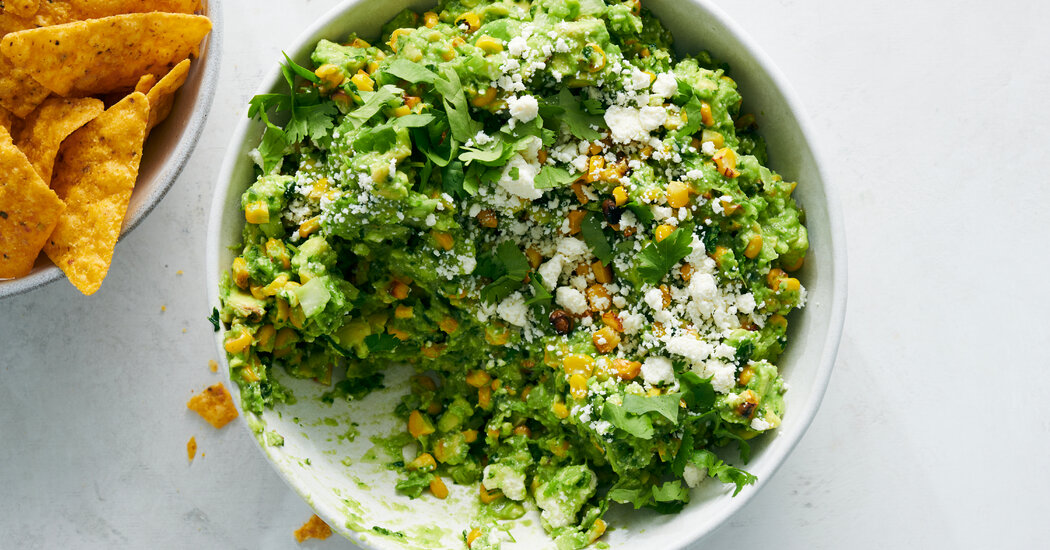
My thoughts in quick succession after seeing the word “esquimole” on the menu at Hasta la Madre, a new Mexican restaurant in the Usaquén neighborhood of Bogotá, Colombia: A portmanteau of guacamole and esquites — grilled corn with mayonnaise, Cotija cheese and chile powder — sounds delicious. (It was.) Though I typically prefer my guacamole simple — I know how controversial mix-ins can be — this particular combination has the potential to become a summertime staple. (It did.)
The dip my wife and I got at Hasta la Madre was smooth and tangy, made with a good proportion of mayonnaise, avocados and heavily charred kernels of starchy corn. Because the creamy Hass avocados and sweet corn we get in the United States are so different from their Colombian counterparts, I decided to use the restaurant version only as very loose inspiration for my own recipe.
First, I started with my go-to basic guacamole, which I make by pounding some chopped onions, cilantro leaves and tender stems, fresh serrano chile and a big pinch of salt into a wet paste in a molcajete. (A pre-Columbian Mesoamerican tool, the molcajete is a wide mortar and heavy pestle made from basalt.) I used to question the efficacy and efficiency of such an ancient piece of equipment compared with a modern appliance like the food processor, but, after dozens of side-by-side taste tests, its superiority at extracting flavor was clear. (And, given how much easier a mortar and pestle is to set up and clean than a food processor, it usually ends up being faster as well.)
To understand why, think of plant cells as a stack of shipping containers, each one filled with flavorful, aromatic compounds. A food processor’s whirling blades are good at knocking over the containers and occasionally breaking one open. A mortar and pestle, on the other hand, are like Godzilla attacking, his heavy feet crushing the containers and bursting them open like grapes. My daughter noticed this on her own: When sniffing herbs from the garden, she noted how scratching or crumpling them in her hand made their aroma intensify.
Don’t have a molcajete or granite mortar and pestle? There are workarounds. Tossing the chopped cilantro, onions and chile in a bowl with kosher salt and allowing them to rest until their juices are drawn out via osmosis and their cells collapse makes the ingredients relatively easy to chop and mash into a paste with the side of your knife.
Once the aromatic paste is finished, the rest of the dip is simple. I crush a few avocados into the mix along with a bit of lime juice (at this stage, I always like to taste it several times — purely to adjust seasoning, of course), then fold in a couple of ears’ worth of heavily charred grilled corn (cooked on the grill, but the broiler also works if you don’t have outdoor space) that I cut from the cobs and allowed to chill. Finally, I add some crumbled Cotija cheese, both folded in and sprinkled on top, and serve the dip with chips and a bottle of Tajín, a lime-flavored chile powder popular on esquites.
I briefly experimented with adding mayonnaise or Mexican sour cream to the guacamole base (both are common ingredients in esquites) but found that the creaminess of Hass avocados made them superfluous.
Don’t relish the thought of grilled corn and Cotija in your guacamole? That’s OK. The guacamole base is delicious all on its own, and nobody will force you to put corn anywhere you don’t want it.



